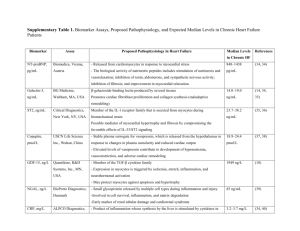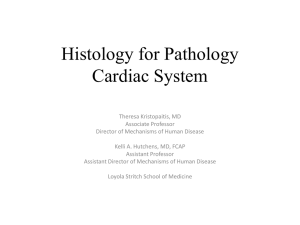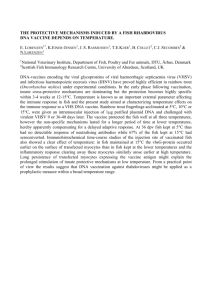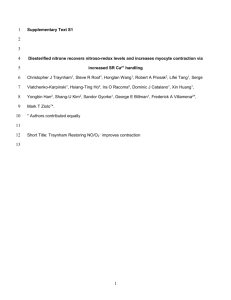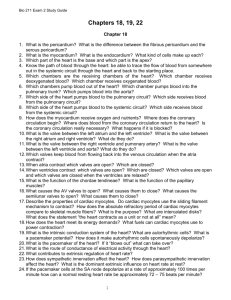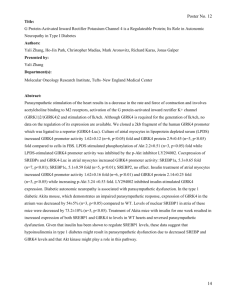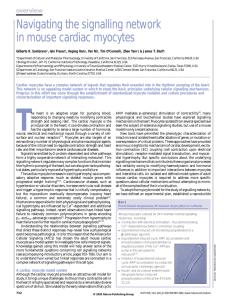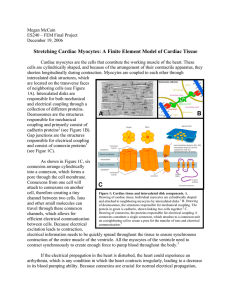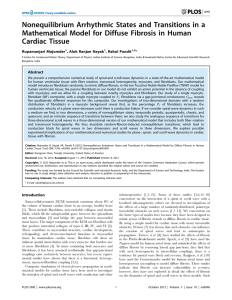electrophysiological characteristics of
advertisement
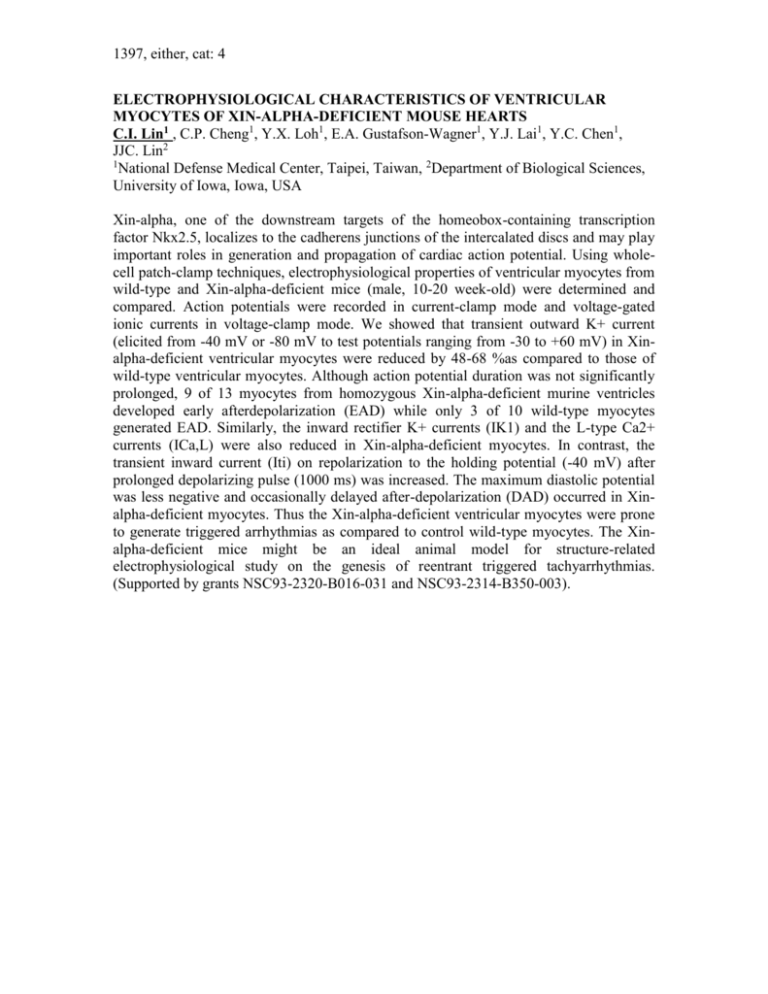
1397, either, cat: 4 ELECTROPHYSIOLOGICAL CHARACTERISTICS OF VENTRICULAR MYOCYTES OF XIN-ALPHA-DEFICIENT MOUSE HEARTS C.I. Lin1 , C.P. Cheng1, Y.X. Loh1, E.A. Gustafson-Wagner1, Y.J. Lai1, Y.C. Chen1, JJC. Lin2 1 National Defense Medical Center, Taipei, Taiwan, 2Department of Biological Sciences, University of Iowa, Iowa, USA Xin-alpha, one of the downstream targets of the homeobox-containing transcription factor Nkx2.5, localizes to the cadherens junctions of the intercalated discs and may play important roles in generation and propagation of cardiac action potential. Using wholecell patch-clamp techniques, electrophysiological properties of ventricular myocytes from wild-type and Xin-alpha-deficient mice (male, 10-20 week-old) were determined and compared. Action potentials were recorded in current-clamp mode and voltage-gated ionic currents in voltage-clamp mode. We showed that transient outward K+ current (elicited from -40 mV or -80 mV to test potentials ranging from -30 to +60 mV) in Xinalpha-deficient ventricular myocytes were reduced by 48-68 %as compared to those of wild-type ventricular myocytes. Although action potential duration was not significantly prolonged, 9 of 13 myocytes from homozygous Xin-alpha-deficient murine ventricles developed early afterdepolarization (EAD) while only 3 of 10 wild-type myocytes generated EAD. Similarly, the inward rectifier K+ currents (IK1) and the L-type Ca2+ currents (ICa,L) were also reduced in Xin-alpha-deficient myocytes. In contrast, the transient inward current (Iti) on repolarization to the holding potential (-40 mV) after prolonged depolarizing pulse (1000 ms) was increased. The maximum diastolic potential was less negative and occasionally delayed after-depolarization (DAD) occurred in Xinalpha-deficient myocytes. Thus the Xin-alpha-deficient ventricular myocytes were prone to generate triggered arrhythmias as compared to control wild-type myocytes. The Xinalpha-deficient mice might be an ideal animal model for structure-related electrophysiological study on the genesis of reentrant triggered tachyarrhythmias. (Supported by grants NSC93-2320-B016-031 and NSC93-2314-B350-003).
